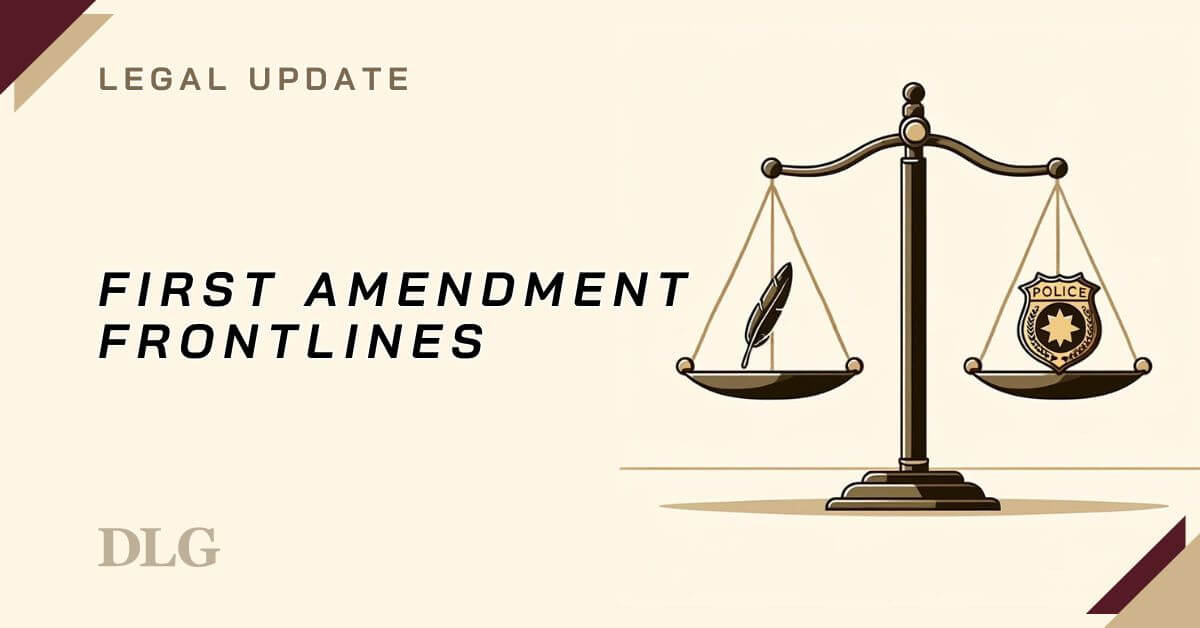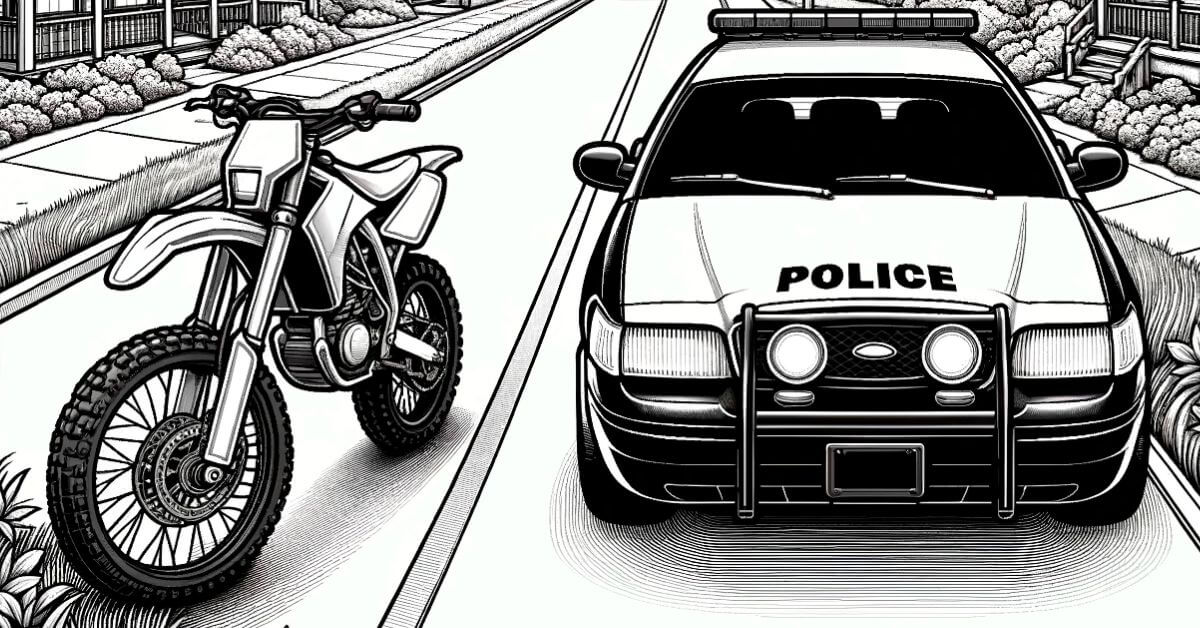Today’s update focuses on a fatal use of force incident out of the 5th Circuit. Our case will review a few hot topics, including qualified immunity, mental health and use of force. To help further understand the court’s decision we have also included a link to the full video from the dashboard camera that the 5th Circuit Court of appeals strongly leaned on when deciding the outcome of this case.
First, a review of how the court views UOF cases and qualified immunity: officers are entitled to qualified immunity as long as their actions do not violate a clearly established constitutional right. A plaintiff can rebut this defense by establishing that genuine issues of fact exist as to whether an officer’s conduct violated clearly established law. In addition, when making a qualified immunity determination, a court is bound to view all the facts in the light most favorable to the Plaintiff.
The court will also use the Graham standards in determining whether force is excessive, taking into consideration the totality of the circumstances, and of course the three parts of the standard:
- The severity of the crime at issue;
- Whether the suspect poses an immediate threat to the safety of the officers or others; and
- Whether [the suspect] is actively resisting arrest or attempting to evade arrest by flight.
FACTS
In the early evening of April 12, 2013, the San Antonio Police Department received complaints from motorists that a man who appeared mentally unstable, later identified as Jesse Aguirre, was walking and waving his hands near the narrow median of Highway 90. The first four officers that responded to the complaint, Cristina Gonzales, Roberto Mendez, Jennifer Morgan, and Bettina Arredondo arrived in separate vehicles on the eastbound side of the expressway opposite where Aguirre was walking near the median.
Officer Gonzales was the first to arrive. She approached Aguirre on foot with her firearm pointed at him, ordering him to “come here.” When Aguirre did not acknowledge the command and continued to walk, Officer Gonzales stepped over the median and followed him. Soon thereafter, Officer Morgan, pointing her gun, and Officer Mendez, pointing his taser, also approached Aguirre along the eastbound side. Aguirre then stopped, bent forward, and placed his hands on the median; Officer Gonzalez rushed forward, grabbed Aguirre’s arms, and handcuffed Aguirre’s hands behind him while he remained bending over the median. Aguirre did not visibly resist being handcuffed. While handcuffing Aguirre, the officers noticed that he had fresh needle marks on his arms, indicating that he had recently used intravenous drugs.
The three officers then pulled Aguirre over the median barrier, causing him to land on his head on the eastbound side of the expressway. The officers patted Aguirre down, finding no weapon, pulled him to his feet, walked him over to the front of Officer Mendez’s car, and bent him over the hood face down with his hands cuffed behind him.
After more officers arrived, they assisted in moving Aguirre from the car hood to the ground onto his stomach next to the median with his hands still cuffed behind him. The video does not show that Aguirre resisted during this maneuver, but instead that he stumbled with the officers toward the median. After Aguirre was placed prone on his stomach, Officer Gonzales pushed his legs up and crossed them near his buttocks and kneeled forward on Aguirre’s legs, holding them near Aguirre’s bound hands in a hog-tie-like position. Officer Mendez knelt with one knee on the ground and the other on Aguirre’s back, later changing position to hold Aguirre’s shoulders and cheek down against the pavement with his hands. Officers Morgan and Arredondo then joined Officers Gonzales and Mendez, placing their hands on Aguirre’s arms and back to hold him prone in the maximal-restraint position. Several more officers arrived and, with Aguirre still being held in that position, the group of officers milled around near Aguirre.
Officer Benito Juarez, a medical tech officer, arrived after Aguirre had been placed in the prone maximal-restraint position, but the record did not disclose whether Juarez offered any advice or assistance to the other officers about the way Aguirre was being held. At some point, Officer Arredondo observed that Aguirre’s lips turned blue, but she thought it was the result of drugs he had taken.
The officers held Aguirre in the prone maximal-restraint position for approximately five-and-a-half minutes while they waited for a police “wagon” to arrive to transport him. After the five-and-a-half minutes had elapsed, the officers noticed that Aguirre was no longer breathing or responsive, and they turned him over on his back and removed the handcuffs.
Aguirre remained unresponsive, leading Officer Mendez to perform a “sternum rub” in an unsuccessful attempt to rouse him. When this and similar techniques proved unsuccessful, Emergency Medical Services (“EMS”) was contacted and one of the officers began to attempt cardiopulmonary resuscitation (“CPR”), but she stopped after about twenty seconds. Eventually, four minutes and thirty-eight seconds after Aguirre was turned over, Officer Juarez began administering CPR in earnest. Officer Juarez and other officers continued to perform CPR on Aguirre until EMS arrived. The officers were ultimately unsuccessful at reviving Aguirre. A subsequent autopsy report concluded that the position in which the officers had placed Aguirre had caused him to asphyxiate, stating that “[d]ue to the restraint by police, this case is classified as a homicide.”
Aguirre’s family filed a lawsuit under 42 U.S.C. § 1983 against five of the officers and the City of San Antonio. The Plaintiffs alleged, among other things, that the officers violated Aguirre’s Fourth Amendment right to be free from unreasonable seizure. Specifically, the Plaintiffs claimed that the officers used excessive force against Aguirre by contorting and holding his body in a prone, hog-tie-like “maximal restraint position” for five-and-a-half minutes during his arrest, causing him to die from asphyxiation.
After the district granted the officers qualified immunity and dismissed the lawsuit as to the City, the Plaintiffs appealed.
FIFTH CIRCUIT OPINION
The Fifth Circuit Court of Appeals felt that when applying the Graham Standard and evaluating Aguirre’s constitutional rights, the officers were not entitled to qualified immunity because there were genuine issues of material fact as to whether the officers violated Aguirre’s Fourth Amendment rights.
The court noted the lack of visible resistance by Aguirre, the presence of numerous officers surrounding him, and the fact that the officers had already blocked off several lanes and caused traffic to slow significantly; all of these circumstances weighed against the inference of any immediate safety threat or other need that would justify placing Aguirre in the prone maximal-restraint position. The court stated: “[A] jury could conclude that no reasonable officer would have perceived [Aguirre] as posing an immediate threat to the officers’ [or his own or the public’s] safety,” meaning that the officers’ use of what may have amounted to deadly force was necessarily excessive of any need to mitigate a public safety threat. Similarly, the court added, “a jury could conclude that no reasonable officer on the scene would have thought that [Aguirre] was resisting arrest,” meaning that the use of force far exceeded the amount necessary to effect Aguirre’s arrest or ensure his safety.
The court recognized that the officers presented their own version of events that included claims of Aguirre’s resistance, including that he: 1) “was resisting and trying to pull away from” the officers while walking near the westbound side of the median; 2) “was still resisting” when placed on the hood of the car; and, 3) “continued to resist by shifting his body around and trying to break free” while pinned against the hood of the patrol car. However, the court found that these claims contradicted the evidence from the police dashcam videos and reinforced the conclusion that genuine disputes of material facts exist.
The court also held that, at the time of the incident, it was clearly established that when a suspect is not resisting it is unreasonable for an officer to apply unnecessary, injurious force against a restrained individual, even if the person had previously not followed commands or initially resisted the seizure. The court added that, in this case, a jury could credit the Plaintiff’s version of the incident and conclude “that no reasonable officer would have perceived [Aguirre] as posing an immediate threat to the [O]fficers’ safety or thought that he was resisting arrest.” Therefore, if a jury believed: 1) that the officers unnecessarily placed Aguirre in the maximal-restraint position when there was no reason to believe he had committed a serious crime; 2) that he posed a continuing threat to the officers or public safety; or, 3) that he was resisting arrest, the officers violated Aguirre’s clearly established constitutional rights.
TAKEAWAYS
First, we absolutely need to review the Graham Standards and ask ourselves these questions every time we need to use force. We of course are not always given the luxury of time to make these decisions, but in this case, officers had a significant amount of time and manpower to be able to decide if what they were doing was reasonable. We must find a way to move forward together; and we must use good, modern police tactics when restraining suspects. It has long been in DLG policy that once a suspect is subdued you should not hold them down on their stomach as this brings the risk of suffocation much higher. It has never been a harder time to do the good work that officers set out to do every day.
Fifth Circuit Fatal Use of Force: Aguirre v. City of San Antonio



